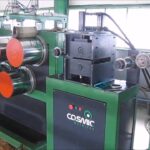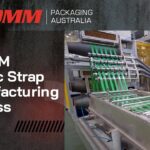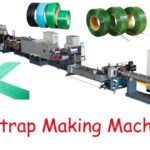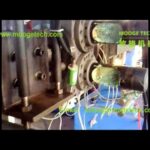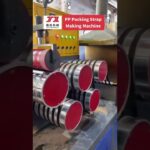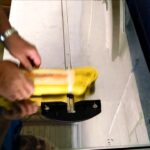PET Strap Usage and Manufacturing: A Guide to Polyester Strapping
Polyester strapping, also known as PET strap, is a versatile and durable material used for securing and bundling heavy loads in various industries. In this video, we provide an in-depth overview of PET strap usage and manufacturing, offering valuable insights into this essential packaging solution. Whether you are a manufacturer, distributor, or end-user, understanding the benefits and applications of PET strap can help optimize your packaging operations and enhance product protection.
Understanding PET Strap: The Basics
PET strap is made from high-quality polyester resin, which is extruded and stretched to create a strong and reliable strapping material. Its exceptional tensile strength and elongation properties make it suitable for securing heavy loads during transportation and storage. PET strap is resistant to UV rays, weather conditions, and moisture, ensuring the integrity of your packaged goods even in challenging environments.
Manufacturing PET strap involves a precise process that includes extrusion, stretching, and cooling. The resulting strapping material is available in various widths, thicknesses, and breaking strengths, allowing you to choose the most suitable option for your specific packaging needs.
The Advantages of PET Strap
PET strap offers numerous advantages over other strapping materials, such as steel and polypropylene. Its high tensile strength allows for secure and tight bundling, minimizing the risk of load shifting during transit. Compared to steel strapping, PET strap is lighter in weight, reducing the overall shipping costs without compromising on strength and stability.
Another key advantage of PET strap is its ability to absorb shocks and impacts, providing additional protection to your packaged products. The flexibility of PET strap enables it to conform to the shape of the load, ensuring a snug fit for enhanced stability. Additionally, PET strap is safer to handle compared to steel strapping, as it does not have sharp edges that pose a risk to workers.
Applications of PET Strap
PET strap finds extensive use across various industries, including:
- Manufacturing and distribution
- Logistics and transportation
- Construction
- Agriculture
- Heavy-duty packaging
From securing pallets, bundling pipes and timber, to fastening bricks and concrete blocks, PET strap offers a reliable and cost-effective solution for a wide range of applications. Its resistance to rust, corrosion, and degradation makes it suitable for long-term storage and outdoor use.
Frequently Asked Questions
Q: What are the advantages of PET strap over polypropylene strapping?
A: PET strap has higher tensile strength, better elongation properties, and superior resistance to UV rays, making it more suitable for heavy-duty applications and outdoor use.
Q: Can PET strap be used with manual tools?
A: Yes, PET strap can be easily applied with manual tensioners and sealers, providing a versatile and user-friendly strapping solution.
Q: How can I ensure the proper tensioning of PET strap?
A: Proper tensioning is crucial for the effectiveness of PET strap. Using a tensioning tool or a strapping machine with adjustable tension settings ensures optimal tension and load stability.
Conclusion
In conclusion, PET strap is a reliable and efficient strapping material that offers numerous advantages for securing heavy loads. Its durability, flexibility, and weather resistance make it an ideal choice for various industries. Whether you are looking to optimize your packaging operations or enhance product protection, PET strap provides a versatile solution that ensures load stability and minimizes the risk of damage during transit. For more information and to explore our range of PET strap options, please contact us at your convenience.
Tags: PET strap, polyester strapping, PET strap usage, PET strap manufacturing, packaging solution
Check the strapping machine solution with leading manufacturers for the professional solution here.
